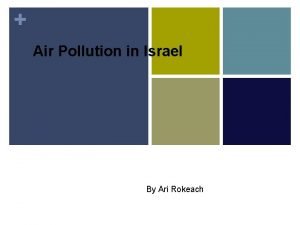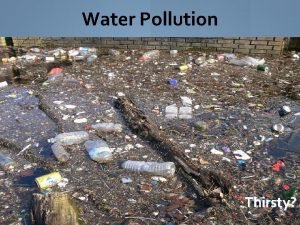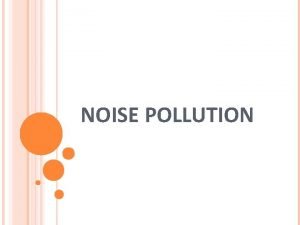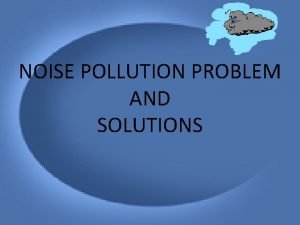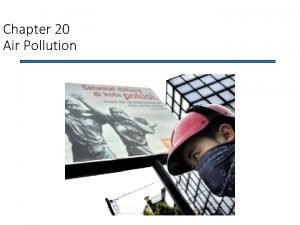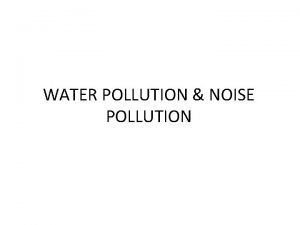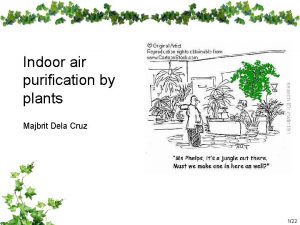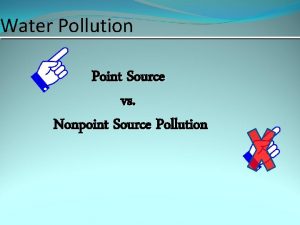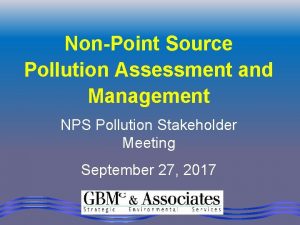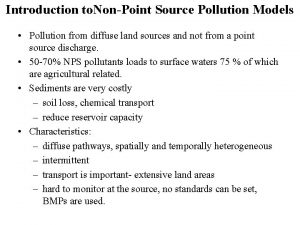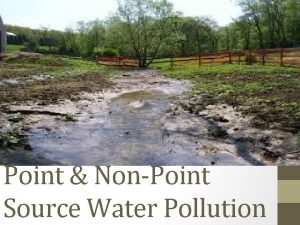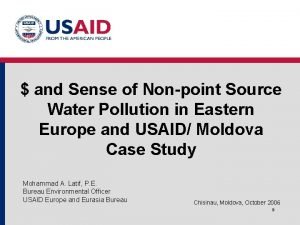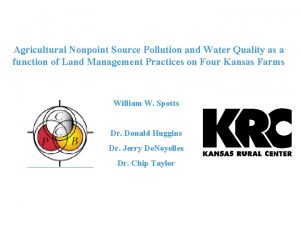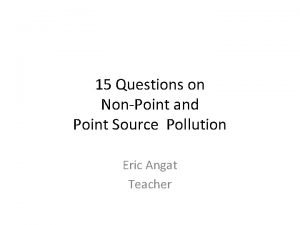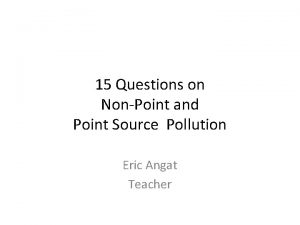Types and Sources of Pollution Pollution nonpoint source










- Slides: 10

Types and Sources of Pollution

Pollution, non-point source �The release of pollutants from numerous, widely dispersed origins; �for example, gases from the exhaust systems of vehicles �Or chimney emissions contained, e. g. SO 2

Pollution, point source � The release of pollutants from a single, clearly identifiable site; for example, a factory chimney or the waste disposal pipe of a factory into a river. � It is much easier to control point source pollution as there is a clearly identifiable source of pollution. If laws are in place to penalise polluters then polluters can be charged in courts of law and penalties applied. The pollution can also be more easily removed or remediated. This is can be more expensive than avoiding the pollution in the first place.

Most Polluted �Investigate: The Most Polluted Places on Earth - reports produced by the Blacksmith Institute and the Swiss Green Cross: http: //www. worstpolluted. org/ �Task: Each student will focus on one case study from the top ten toxic pollution problems in the "worstpolluted" website, review the information and produce a short powerpoint presentation for the other students highlighting the sources of pollution, health hazards, problem areas, and solutions.

Sources of Pollution And Their Effects

Combustion of fossil fuels Pollutant Effect carbon dioxide greenhouse gas - climate change acidification of oceans sulfur dioxide acid deposition - tree and fish deaths, respiratory disease in humans nitrogen oxides acid deposition - as above respiratory infections, eye irritation, smog photochemical smog including tropospheric ozone, PANs (peroxyacyl nitrates), VOCs (volatile organic compounds) secondary pollutants (formed from others in the atmosphere) carbon monoxide damage plants, eye irritation, respiratory problems in humans binds with haemoglobin in red blood cells instead of oxygen - can lead to death by suffocation

Domestic Waste organic waste (food and sewage) eutrophication, water-borne diseases waste paper volume fills up landfill sites, forests cut to produce it volume fills up landfill sites, usually derived from mineral oil, non-biodegradable, easily enter biosphere and endanger animals (marine) plastics - containers, packaging glass energy required to manufacture it (as with all products), can be recycled but often goes into landfill sites tins can be recycled but also goes into landfill sites

Industrial waste heavy metals poisoning, e. g. mercury, lead, cadmium fluorides poisoning heat reduces solubility of gases in water, so less dissolved oxygen so aquatic organisms may die lead disabilities in children acids corrosive

Agricultural waste nitrates / phosphates eutrophication organic waste eutrophication, spread disease pesticides accumulate up food chain

Manufactured products (later found to be polluting) haloalkanes (e. g. CFCs) destroy ozone in the stratosphere greenhouse gas (not connected with ozone depletion) persistent organic pollutants (POPs), e. g. DDT trigger cancer, reduce immunity, impair children's learning ability, bioaccumulate and biomagnify in food chains bisphenol-A (used to make plastic shatterproof and transparent) leaches from plastic at high temperatures with uncertain effects but binds to same sites as the hormone oestrogen (oestrogen mimicking) Reading: The Dirty Dozen: http: //www. independent. co. uk/environment/un-treaty-toban-dirty-dozen-pollutants-in-developing-world-685709. html
 Print sources and web sources
Print sources and web sources Important of water resources
Important of water resources Stationary and mobile sources of air pollution
Stationary and mobile sources of air pollution Groundwater pollution
Groundwater pollution Solution for water pollution
Solution for water pollution Sollution of noise pollution
Sollution of noise pollution Sound pollution problems
Sound pollution problems Two sources of air pollution
Two sources of air pollution Sources of noise pollution
Sources of noise pollution Mobile source definition
Mobile source definition Indoor air pollutants
Indoor air pollutants


